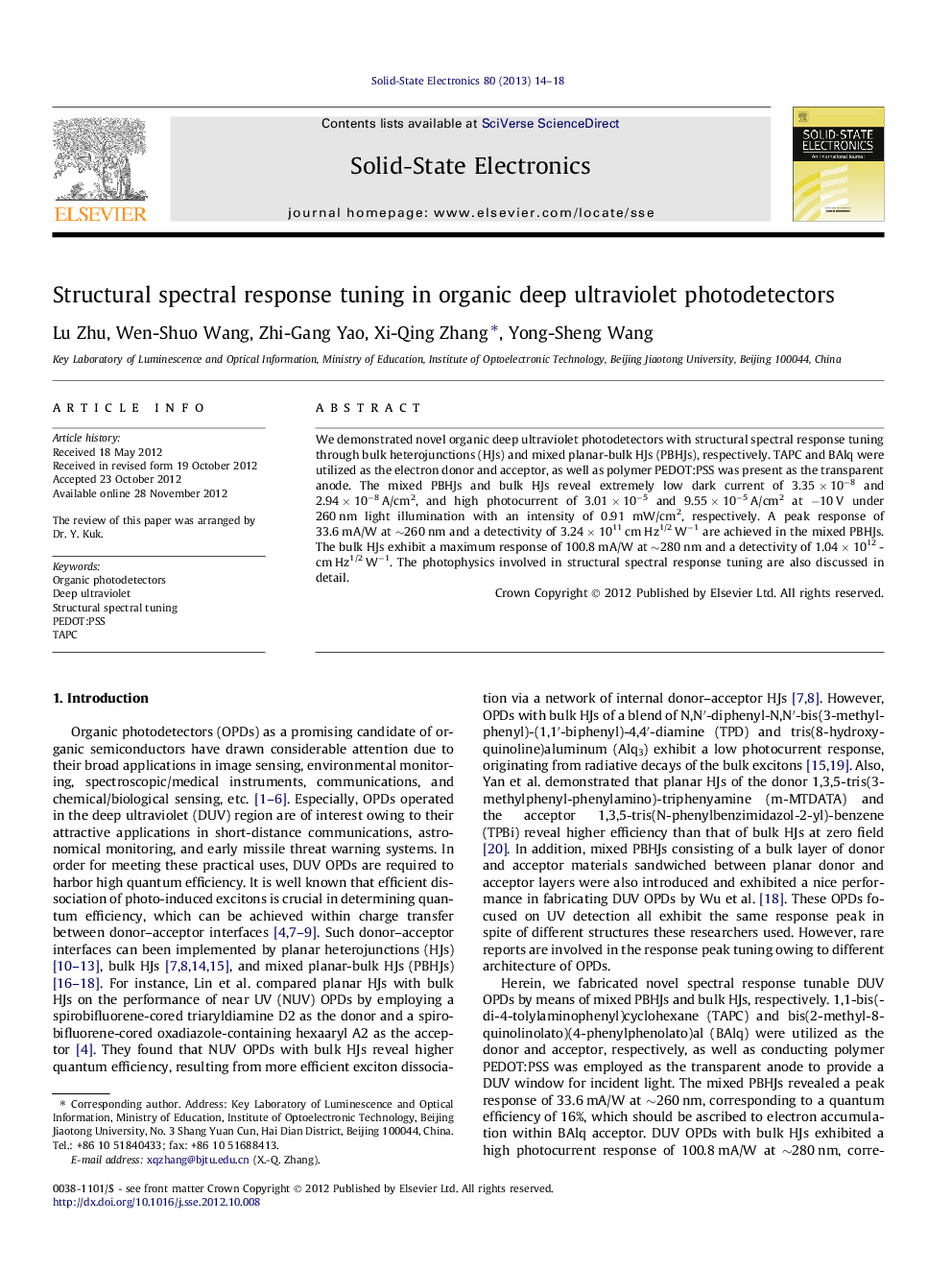| کد مقاله | کد نشریه | سال انتشار | مقاله انگلیسی | نسخه تمام متن |
|---|---|---|---|---|
| 748361 | 1462252 | 2013 | 5 صفحه PDF | دانلود رایگان |

We demonstrated novel organic deep ultraviolet photodetectors with structural spectral response tuning through bulk heterojunctions (HJs) and mixed planar-bulk HJs (PBHJs), respectively. TAPC and BAlq were utilized as the electron donor and acceptor, as well as polymer PEDOT:PSS was present as the transparent anode. The mixed PBHJs and bulk HJs reveal extremely low dark current of 3.35 × 10−8 and 2.94 × 10−8 A/cm2, and high photocurrent of 3.01 × 10−5 and 9.55 × 10−5 A/cm2 at −10 V under 260 nm light illumination with an intensity of 0.91 mW/cm2, respectively. A peak response of 33.6 mA/W at ∼260 nm and a detectivity of 3.24 × 1011 cm Hz1/2 W−1 are achieved in the mixed PBHJs. The bulk HJs exhibit a maximum response of 100.8 mA/W at ∼280 nm and a detectivity of 1.04 × 1012 cm Hz1/2 W−1. The photophysics involved in structural spectral response tuning are also discussed in detail.
► We introduce small molecule TAPC to play as the donor material in organic photodetectors.
► Organic photodetectors employ different structures exhibit different response peaks.
► Bulk heterojunctions of TAPC:BAlq reveal the response peak at ∼280 nm.
► Mixed planar-bulk heterojunctions of TAPC/TAPC:BAlq/BAlq reveal the response peak ∼260 nm.
► Both two organic photodetectors reveal low dark currents, large photo-to-dark-current ratios and high photoresponse.
Journal: Solid-State Electronics - Volume 80, February 2013, Pages 14–18